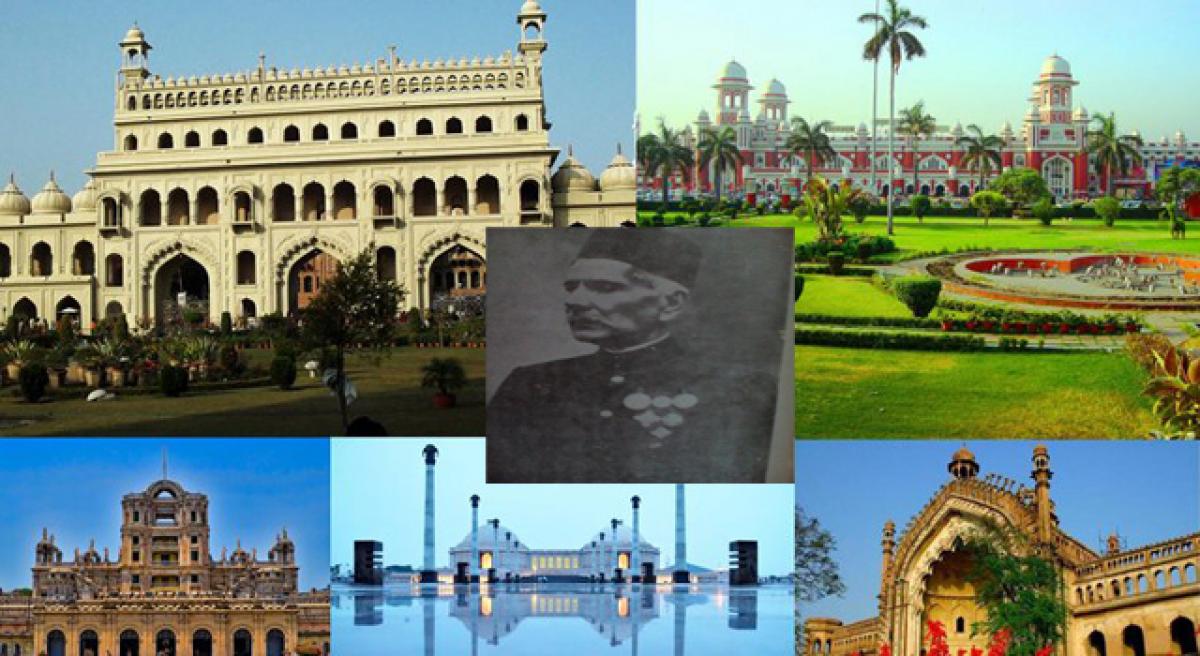Live
- Beautification works to pick up pace in city
- Dozen flyovers to come up in Visakhapatnam
- NDA govt is controlling prices effectively: Dinakar
- Jagan govt didn’t pay even kids’ chikki bills: FM
- Bomb Threat at Shamshabad Airport: Passenger Detained, No Explosive Devices Found
- CID probe soon into past irregularities in excise dept
- FiberNet to provide 50 lakh cable connections
- Gold rates in Hyderabad today surges, check the rates on 16 November, 2024
- Gold rates in Visakhapatnam today surges, check the rates on 16 November, 2024
- Fire breaks out at an apartment in Manikonda, no casualties
Just In

Every poetic tradition has one great exponent, traditionally and popularly embodying and representing its identity and characteristics. Most are historic figures, though relatively new, or revived languages may see those from recent past or even contemporary times.
Every poetic tradition has one great exponent, traditionally and popularly embodying and representing its identity and characteristics. Most are historic figures, though relatively new, or revived languages may see those from recent past or even contemporary times.
As vital but considerably less-celebrated or even remembered are those who enable the tradition to survive and flourish by facilitating its transition from its 'golden age' to the modern era. Like this Lucknow poet did for Urdu.
In his time, Allama Syed Ali Naqi Zaidi "Safi Lakhnavi" (1862-1950) was among the standard-bearers of 'Dabistan-e-Lakhnau' (the Lucknow School of Poetry), was termed "Lissan-ul-Qaum", or the prominent spokesman of the people, and still figures on the syllabus of Urdu literature courses in universities but has virtually disappeared from popular consciousness.
It is a sad fate for one who not only enriched Urdu poetry but also took it forward, with one of his most famous couplets well announcing his intention: "Ghazal usne chheri, mujhe saaz dena/Zara umre rafta ko awaz dena".
Born in a prominent Syed family of Lucknow, Safi was the son of Syed Fazal Husain, who had been a tutor to Prince Suleiman Qader Bahadur, son of Avadh's penultimate ruler, Nawab Amjad Ali Shah. Educated both in Persian and Arabic, he then went for a modern education in Canning College (later the Lucknow University) and subsequently, worked in the provincial Revenue Department.
Poetry was a leisure activity, but an old and abiding pastime, since he was composing since the age of 13. According to most accounts, he never even had an 'ustad' (guide) while some others hold Ali Mian Kamil guided his early attempts but later in life, Safi always disavowed having ever been his 'shagird' (protégé).
In his own time, Safi however himself had plenty of 'shagirds', prominent ones being Mirza Hadi Ruswa (the author of "Umrao Jan Ada"), Mirza Muhammad Hadi "Aziz Lakhnavi" and Nawab Jafar Ali Khan "Asr Lakhnavi". His prominent works, besides his diwan, are ‘Aghosh-i-Madar’, and ‘Tanzeem-ul-Hayat’.
As a poet, Safi belongs to Urdu's “Neo-Classical” tradition and his verse, characterised by the simple, common language he always used, blended tradition and modern sensibilities but was reformist in tenor.
He was adept in all forms of poetry - 'masnvis', 'qasidas', 'marsiyas', 'qitas' and 'ruba'is" - but it is in the realm of ghazals that he became most famous and continues to be held in high regard.
And, in the form, he could cover a lot of ground, both old and new, but with his own distinct and innovative approach.
Be it that old staple - coquetry in love and its fateful consequences, he turns them on their head by the unexpected way of narration as in: "Janaza rok kar mera voh is andaaz mein bole/Gali ham ne kahi thi, tum to duniya chore jaate ho", or maybe: "Meri laash ke sarhane voh khade yeh keh rahe hai/Aesi neendein na aati agar intezar karta".
He could do the same with the uncertainties or challenges of love: "Ghair ki bazm mein darkaar hai saghir ke liye/Gardishen kam na padhen mere muqaddar ke liye", the impatience it engenders: "Dekhe baghair haal ye hai iztirab ka/Kya jaane kya ho parda jo uthe naqab ka" or for that matter, its healing power: "Kya poochte ho dard kahan se kahan nahi/Rakha tha tumne haath jahan par vahan nahi".
But it was not always love for Safi, who could also envisage when sentiments and appearances fade - or even the power of poetic description: "Kal hamne aine mein rukh ki jhurriyan dekha kiye/Karvaan-e-umr-e-rafte ka nishan dekha kiye", or "Khatam ho jaate jo husn-o-ishq ke naaz-o-ada/Shayri bhi khatam ho jaati nabuwwat ki tarah".
And even in the first stirrings of love, he could also project life's inevitable and uncomfortable result. Take the ghazal that begins "Dard-e-aghaz-e-mohabbat ka ab anjaam nahi/Zindagi kya agar maut ka paigham nahi", and then - in his version of a much-rendered but most-ignored advice, tells us: "Yehi jannat hai jo haasil ho sukun-e-khaatir/Aur dozakh yehi duniya agar aram nahi" and and ends: "Shayar-goi ke liye bas vahi mouzun hai 'Safi'/Jis ko juz fikr-e-sukhan aur koi kaam nahi".
His final years didn't see him lead a very pleasant life, being much disturbed by the attacks on Urdu and the climate of polarisation and hate being created. But he once said: "Hasti ko mita de jo sada mehr-o-wafa mein/Ta hashr voh be nam-o-nishaan ho nahi sakta", and we must not let his word be untrue.
By: Vikas Datta

© 2024 Hyderabad Media House Limited/The Hans India. All rights reserved. Powered by hocalwire.com







